|
|
| Dwarf males |
| Reproduction of monogonont rotifers happens either by facultative parthenogenesis or sexually. Monogonont rotifers show sexual dimorphism to various extent. While sexual dimorphism is not very obvious in certain genera, eg. Asplanchna, where the males have nearly the same size as the females, in other genera the males are less than 50% the size of the females and are called dwarf males. Some examples can be seen in the images below. Not only are the dwarf males smaller, but typically also lack the digestive system including the mastax and trophi. This occurs only in the mictic generation of reproduction. Haploid mictic eggs come in two different sizes, small ones and big ones. (An example from Polyarthra can be seen here). The small eggs, which contain less yolk, develop into dwarf males. |
|
| Cephalodella sp., mating behavior. The copulation organ of the male (which is the left animal) is visible in the inside of the female (arrowhead). |
| |
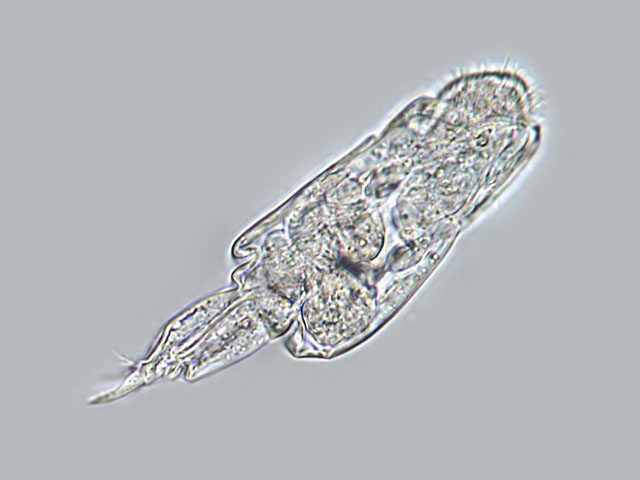 |
| Cephalodella sp., male |
| |
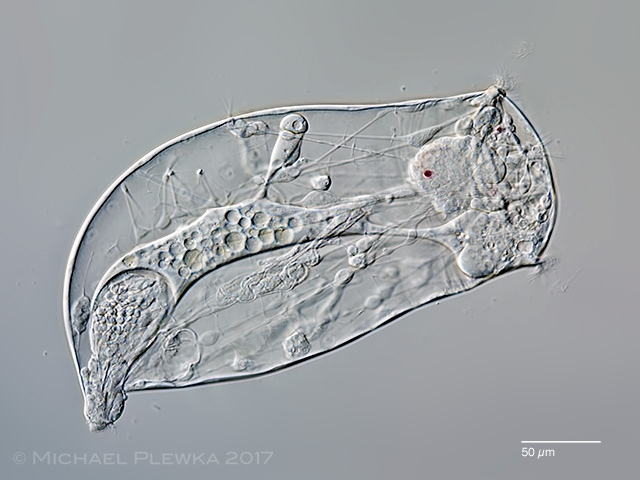 |
| Asplanchna priodonta, male specimen. In Asplanchna, the males are not much smaller than the females and look pretty similar (except for the trophi and sexual organs). |
| |
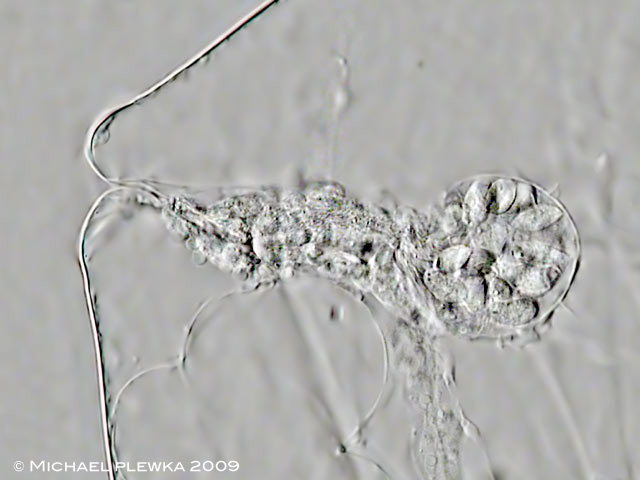 |
| Asplanchna priodonta, male; genital apparatus. |
|
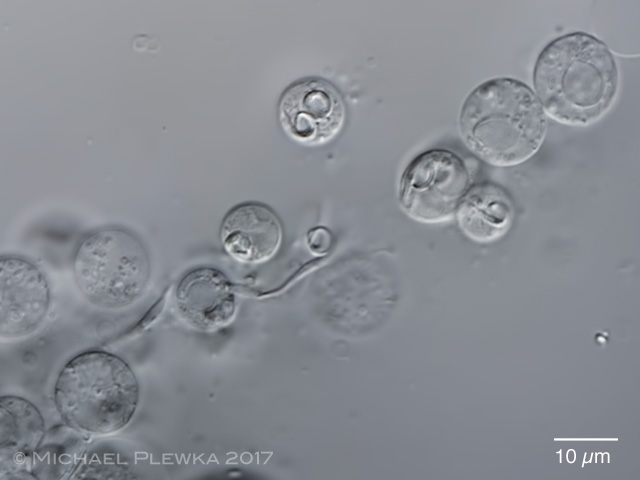 |
| Asplanchna priodonta, haploid (1n) sperms / spermatocytes. |
| |
 |
| Brachionus sp., male |
| |
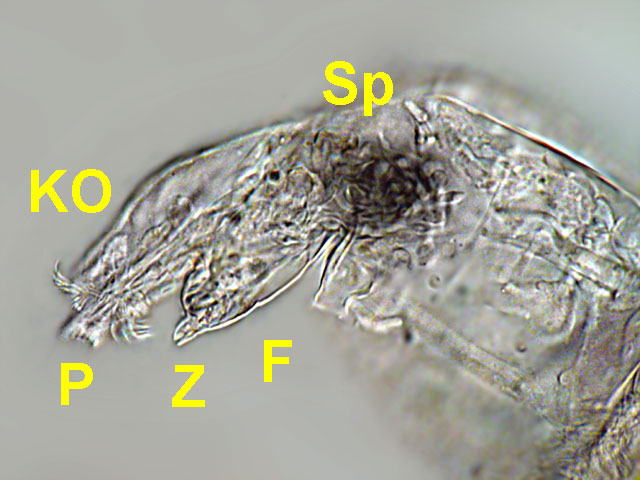 |
| Brachionus sp., male; reproductive organs: F: foot, which is ventral of the copulation organ (KO) and the penis (P). Sp: sperms; Z: toes. |
| |
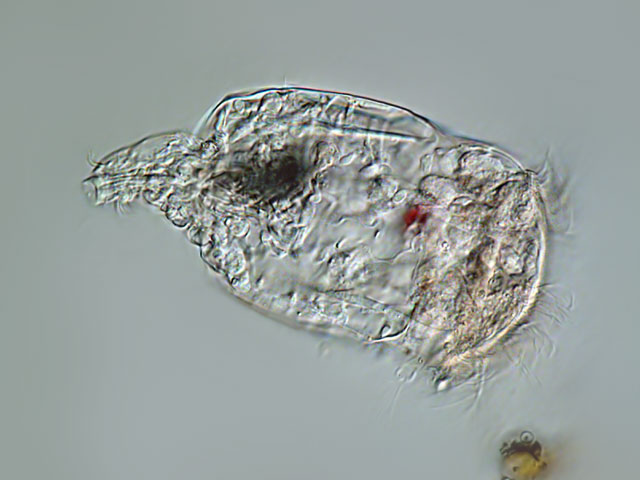 |
| Brachionus sp., male |
| |
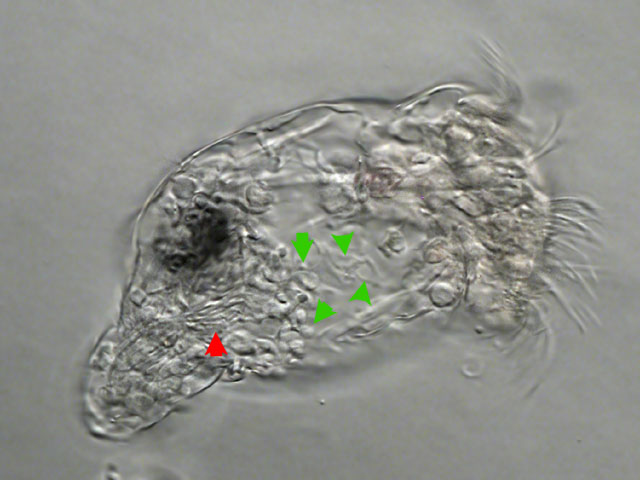 |
| Brachionus sp., male; the red arrowhead points to the rods, which supposedly help the spermatocytes (green arrowheads) to intrude through the body integument of the female. |
| |
 |
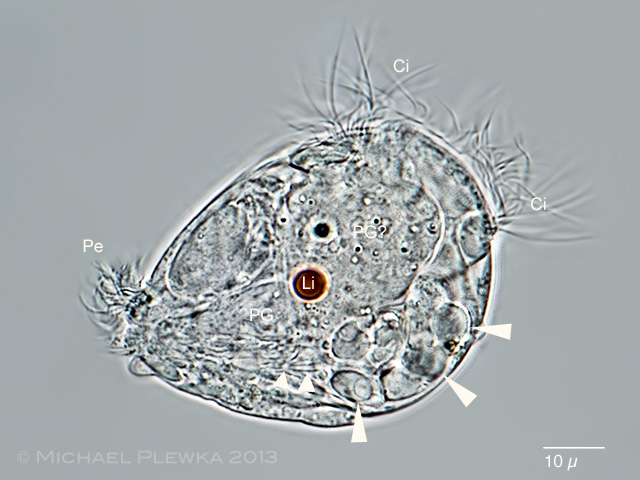 |
| Polyarthra vulgaris, male; two images. Ci: Cilia for locomotion. Pe: penis; PG: penis gland; Li: lipid droplet. the arrowheads point to the spermatocytes; the triangles to the rods. |
| |
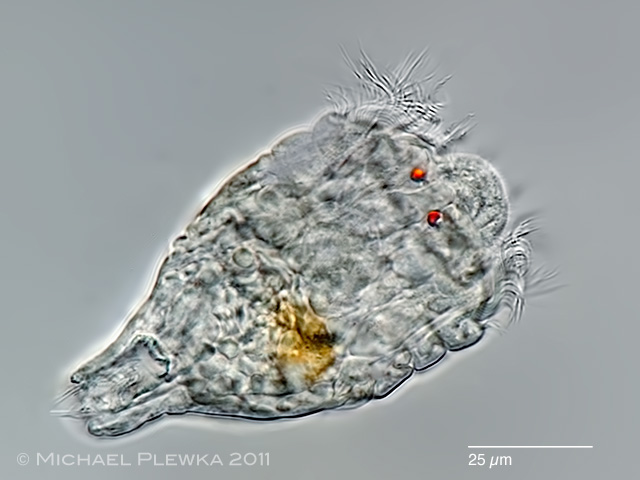 |
| male of Filinia longiseta. |
| |
 |
| male of Cephalodella gracilis |
| |
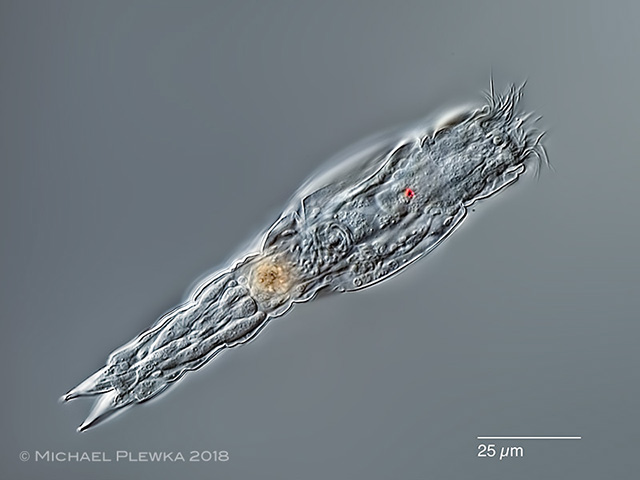 |
| male rotifer, probably genus Cephalodella; species unknown. |
| |
|
|
|
|
|
|